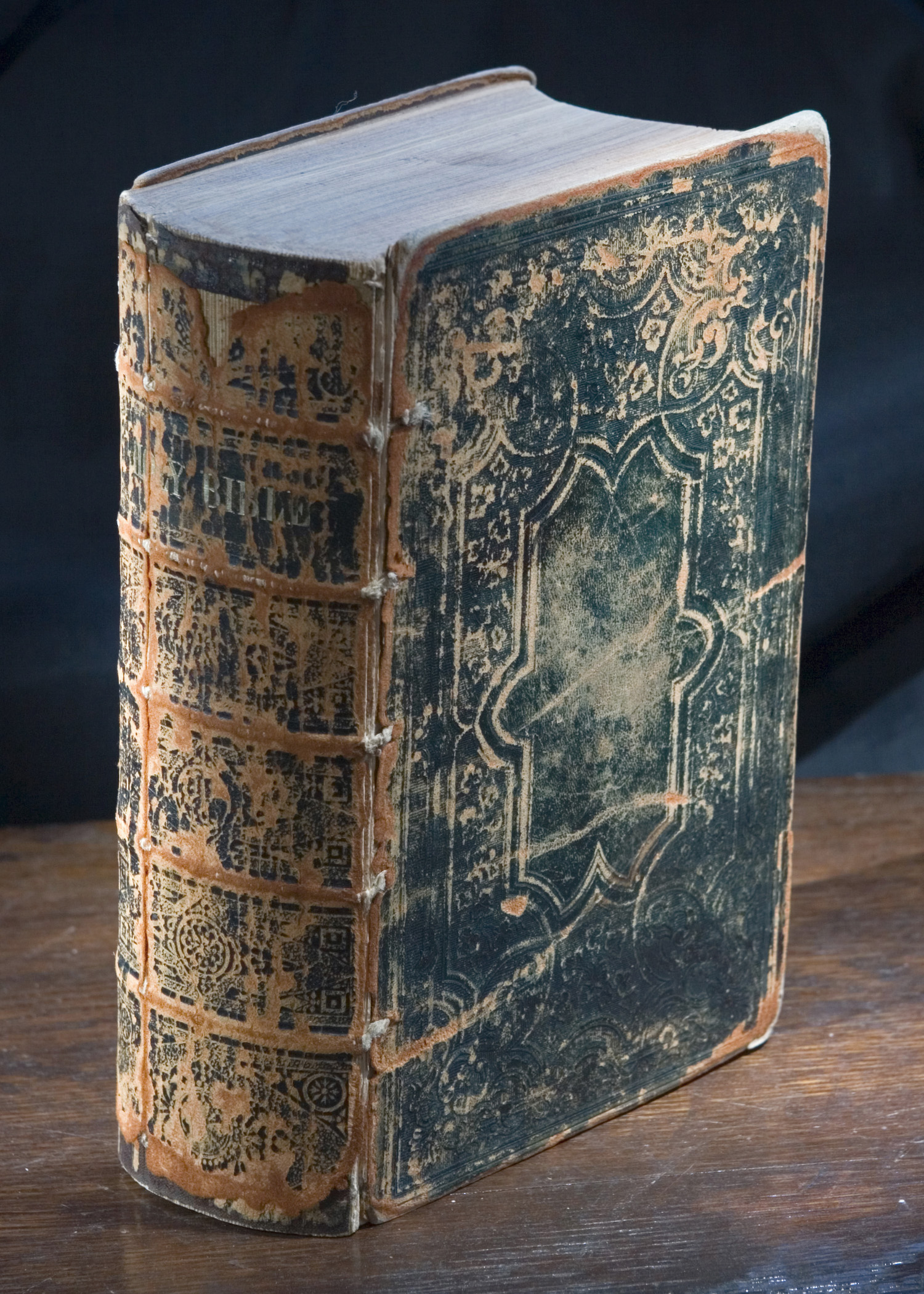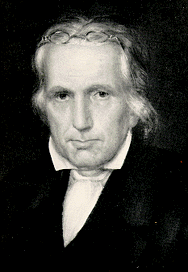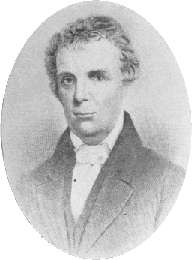|
Campbellite
Campbellite is a mildly pejorative term referring to adherents of certain religious groups that have historic roots in the Restoration Movement, among whose most prominent 19th-century leaders were Thomas Campbell (clergyman), Thomas and Alexander Campbell (clergyman), Alexander Campbell. Members of these groups generally consider the term ''Campbellite'' inappropriate, saying that they are followers of Jesus, not Campbell.See also Wayne Jackson"Alexander Campbell and Christ's Church,"''Christian Courier'' (accessed 11-15-2012)James D. Bales, ''The Faith Under Fire'', Lambert Book House, Shreveport, Louisiana, 1867 They draw parallels with Martin Luther's protest of the name ''Lutherans''V. E. Howard, ''What Is the Church of Christ?'' 4th Edition (Revised) Central Printers & Publishers, West Monroe, Louisiana, 1971 and the Anabaptists' protest of the name given to them by their enemies. With specific reference to the early Restoration Movement, "[t]he terms Campbellism and Campbell ... [...More Info...] [...Related Items...] OR: [Wikipedia] [Google] [Baidu] |
Churches Of Christ
The Churches of Christ is a loose association of autonomous Christian congregations based on the ''sola scriptura'' doctrine. Their practices are based on Bible texts and draw on the early Christian church as described in the New Testament. The Churches of Christ are represented across the world. Typically, their distinguishing beliefs are that of the necessity of baptism for salvation and the prohibition of instruments in worship. They identify themselves as being nondenominational. The Churches of Christ arose from the Restoration Movement of 19th-century evangelism by groups who declared independence from denominations and traditional creeds. They sought "the unification of all Christians in a single body patterned after the original church of the New Testament."Rubel Shelly, ''I Just Want to Be a Christian'', 20th Century Christian, Nashville, Tennessee 1984, The Restoration Movement was not a purely North American phenomenon. There are now Churches of Christ in Africa, ... [...More Info...] [...Related Items...] OR: [Wikipedia] [Google] [Baidu] |
Restoration Movement
The Restoration Movement (also known as the American Restoration Movement or the Stone–Campbell Movement, and pejoratively as Campbellism) is a Christian movement that began on the United States frontier during the Second Great Awakening (1790–1840) of the early 19th century. The pioneers of this movement were seeking to reform the church from within and sought "the unification of all Christians in a single body patterned after the church of the New Testament."Rubel Shelly, ''I Just Want to Be a Christian'', 20th Century Christian, Nashville, TN 1984, The Restoration Movement developed from several independent strands of religious revival that idealized early Christianity. Two groups, which independently developed similar approaches to the Christian faith, were particularly important. The first, led by Barton W. Stone, began at Cane Ridge, Kentucky, and identified as "Christians". The second began in western Pennsylvania and Virginia (now West Virginia) and was led by Tho ... [...More Info...] [...Related Items...] OR: [Wikipedia] [Google] [Baidu] |
Disciples Of Christ (Campbell Movement)
The Disciples of Christ (Campbell Movement) were a group arising during the Second Great Awakening of the early 19th century. The most prominent leaders were Thomas and Alexander Campbell. The group was committed to restoring primitive Christianity. It merged with the Christians (Stone Movement) in 1832 to form what is now described as the American Restoration Movement (also known as the Stone–Campbell Restoration Movement). History The Campbell wing of the American Restoration Movement was launched when Thomas Campbell published the '' Declaration and Address of the Christian Association of Washington'' in 1809. The Presbyterian Synod had suspended his ministerial credentials. In ''The Declaration and Address'' he set forth some of his convictions about the church of Jesus Christ, as he organized the Christian Association of Washington, in Washington County, Pennsylvania, not as a church but as an association of persons seeking to grow in faith.McAlister, Lester G. and Tuck ... [...More Info...] [...Related Items...] OR: [Wikipedia] [Google] [Baidu] |
Pejorative
A pejorative or slur is a word or grammatical form expressing a negative or a disrespectful connotation, a low opinion, or a lack of respect toward someone or something. It is also used to express criticism, hostility, or disregard. Sometimes, a term is regarded as pejorative in some social or ethnic groups but not in others, or may be originally pejorative but later adopt a non-pejorative sense (or vice versa) in some or all contexts. Etymology The word ''pejorative'' is derived from a Late Latin past participle stem of ''peiorare'', meaning "to make worse", from ''peior'' "worse". Pejoration and melioration In historical linguistics, the process of an inoffensive word becoming pejorative is a form of semantic drift known as pejoration. An example of pejoration is the shift in meaning of the word ''silly'' from meaning that a person was happy and fortunate to meaning that they are foolish and unsophisticated. The process of pejoration can repeat itself around a single concept, ... [...More Info...] [...Related Items...] OR: [Wikipedia] [Google] [Baidu] |
MacKinlay Kantor
MacKinlay Kantor (February 4, 1904 – October 11, 1977), born Benjamin McKinlay Kantor, was an American journalist, novelist and screenwriter. He wrote more than 30 novels, several set during the American Civil War, and was awarded the Pulitzer Prize for Fiction in 1956 for his 1955 novel, ''Andersonville''. He also wrote the novel ''Gettysburg'', set during the Civil War. Early life and education Kantor was born and grew up in Webster City, Iowa, the second child and only son in his family. He had a sister, Virginia. His mother, Effie (McKinlay) Kantor, worked as the editor of the ''Webster City Daily News'' during part of his childhood. His father, John Martin Kantor, was a native-born Swedish Jew descended from "a long line of rabbis, who posed as a Protestant clergyman". His mother was of English, Irish, Scottish, and Pennsylvania Dutch ancestry. (Later, MacKinlay Kantor wrote an unpublished novel called ''Half Jew''.) republished on ''Mystery File'' Kantor's ... [...More Info...] [...Related Items...] OR: [Wikipedia] [Google] [Baidu] |
The Churches Of Christ (non-institutional)
The label "non-institutional" refers to a distinct fellowship within the Churches of Christ who do not agree with the support of parachurch organizations (colleges, orphans' homes, organized mission efforts, etc.) by local congregations. They contend that the New Testament includes no authority for churches' support of such institutions. Instead they feel that it is a responsibility and duty of the individual members to assist those in need. Similarly, most non-institutional congregations also oppose the use of church facilities for non-church activities (such as fellowship dinners or recreation); as such, they oppose the construction of "fellowship halls", gymnasiums, and similar structures. The belief is that, although such activities may be beneficial, they are not a proper function of a local congregation. These local churches became separated from "mainline" (pro-institutional) churches of Christ because of these viewpoints, developing into a distinct segment of congregation ... [...More Info...] [...Related Items...] OR: [Wikipedia] [Google] [Baidu] |
Christian Churches And Churches Of Christ
The group of churches known as the Christian Churches and Churches of Christ is a fellowship of congregations within the Restoration Movement (also known as the Stone-Campbell Movement and the Reformation of the 19th Century) that have no formal denominational affiliation with other congregations, but still share many characteristics of belief and worship. Churches in this tradition are strongly congregationalist and have no formal denominational ties, and thus there is no proper name that is agreed to apply to the movement as a whole. Most (but not all) congregations in this tradition include the words "Christian Church" or "Church of Christ" in their congregational name. Due to the lack of formal organization between congregations, there is a lack of official statistical data, but the 2016 ''Directory of the Ministry'' documents some 5000 congregations in the USA and Canada; some estimate the number to be over 6,000 since this directory is unofficial. These congregations sha ... [...More Info...] [...Related Items...] OR: [Wikipedia] [Google] [Baidu] |
Organ (music)
Carol Williams performing at the United States Military Academy West Point Cadet Chapel.">West_Point_Cadet_Chapel.html" ;"title="United States Military Academy West Point Cadet Chapel">United States Military Academy West Point Cadet Chapel. In music, the organ is a keyboard instrument of one or more Pipe organ, pipe divisions or other means for producing tones, each played from its own Manual (music), manual, with the hands, or pedalboard, with the feet. Overview Overview includes: * Pipe organs, which use air moving through pipes to produce sounds. Since the 16th century, pipe organs have used various materials for pipes, which can vary widely in timbre and volume. Increasingly hybrid organs are appearing in which pipes are augmented with electric additions. Great economies of space and cost are possible especially when the lowest (and largest) of the pipes can be replaced; * Non-piped organs, which include: ** pump organs, also known as reed organs or harmoniums, which ... [...More Info...] [...Related Items...] OR: [Wikipedia] [Google] [Baidu] |
Christian Church (Disciples Of Christ)
The Christian Church (Disciples of Christ) is a mainline Protestant Christian denomination in the United States and Canada. The denomination started with the Restoration Movement during the Second Great Awakening, first existing during the 19th century as a loose association of churches working towards Christian unity, then slowly forming quasi-denominational structures through missionary societies, regional associations, and an international convention. In 1968, the Disciples of Christ officially adopted a denominational structure at which time a group of churches left to remain nondenominational. It is often referred to as The Christian Church, The Disciples of Christ, The Disciples, or the DOC. The Christian Church was a charter participant in the formation of the World Council of Churches (WCC) and of the Federal Council of Churches (now the National Council of Churches), and it continues to be engaged in ecumenical conversations. The Disciples' local churches are congre ... [...More Info...] [...Related Items...] OR: [Wikipedia] [Google] [Baidu] |
John Smith (Restoration Movement)
"Raccoon" John Smith (1784 – February 28, 1868) was an early leader in the Restoration Movement.Douglas Allen Foster and Anthony L. Dunnavant, ''The Encyclopedia of the Stone-Campbell Movement: Christian Church (Disciples of Christ), Christian Churches/Churches of Christ, Churches of Christ'', Wm. B. Eerdmans Publishing, 2004, , , entry on ''Smith, "Raccoon" John'' His father, George Smith (originally Schmidt) was of German ancestry, and may have been born in Germany, while his mother, Rebecca Bowen Smith, was of Welsh and Irish ancestry. He played a critical role uniting the movement led by Thomas and Alexander Campbell with the similar movement led by Barton W. Stone and in spreading the message of the movement over much of Kentucky. Personal life Smith was born in what is now Sullivan County, Tennessee, in 1784 to a family of Regular Baptists. His nickname, "Raccoon", reportedly resulted from him saying he lived in such a remote location that his only neighbors were ... [...More Info...] [...Related Items...] OR: [Wikipedia] [Google] [Baidu] |
Walter Scott (clergyman)
Walter Scott (1796 – April 23, 1861) was one of the four key early leaders in the Restoration Movement, along with Barton W. Stone, Thomas Campbell and Thomas' son Alexander Campbell.Douglas Allen Foster and Anthony L. Dunnavant, ''The Encyclopedia of the Stone-Campbell Movement: Christian Church (Disciples of Christ), Christian Churches/Churches of Christ, Churches of Christ'', Wm. B. Eerdmans Publishing, 2004, , , 854 pages, entry on ''Scott, Walter'' He was a successful evangelist and helped to stabilize the Campbell movement as it was separating from the Baptists. Biography Walter was born to John and Mary Innes Scott in 1796 in the town of Moffatt, Scotland. His parents, who were members of the Church of Scotland, hoped that he would become a Presbyterian minister. He spent six years at the University of Edinburgh, leaving in 1818. The same year he went to New York City at the invitation of his maternal uncle, where he taught languages at a school on Long Island. He s ... [...More Info...] [...Related Items...] OR: [Wikipedia] [Google] [Baidu] |
Christians (Stone Movement)
The Christians (Stone Movement) were a group arising during the Second Great Awakening of the early 19th century. The most prominent leader was Barton W. Stone. The group was committed to restoring Christian primitivism, primitive Christianity. It merged with the Disciples of Christ (Campbell Movement) in 1832 to form what is now described as the American Restoration Movement (also known as the Stone-Campbell Restoration Movement.) The tradition today is represented in the Churches of Christ and the Christian Church (Disciples of Christ). Barton Stone Barton W. Stone was born to John and Mary Stone in 1772 in Port Tobacco, Maryland. During his childhood, the boy grew up within the Church of England, then had Baptist, Methodist and Episcopal Church in the United States of America, Episcopal church influences as well. Preachers representing Baptists and Methodists came to the area during the Second Great Awakening, and Baptist and Methodist chapels were founded in the county. Ba ... [...More Info...] [...Related Items...] OR: [Wikipedia] [Google] [Baidu] |





